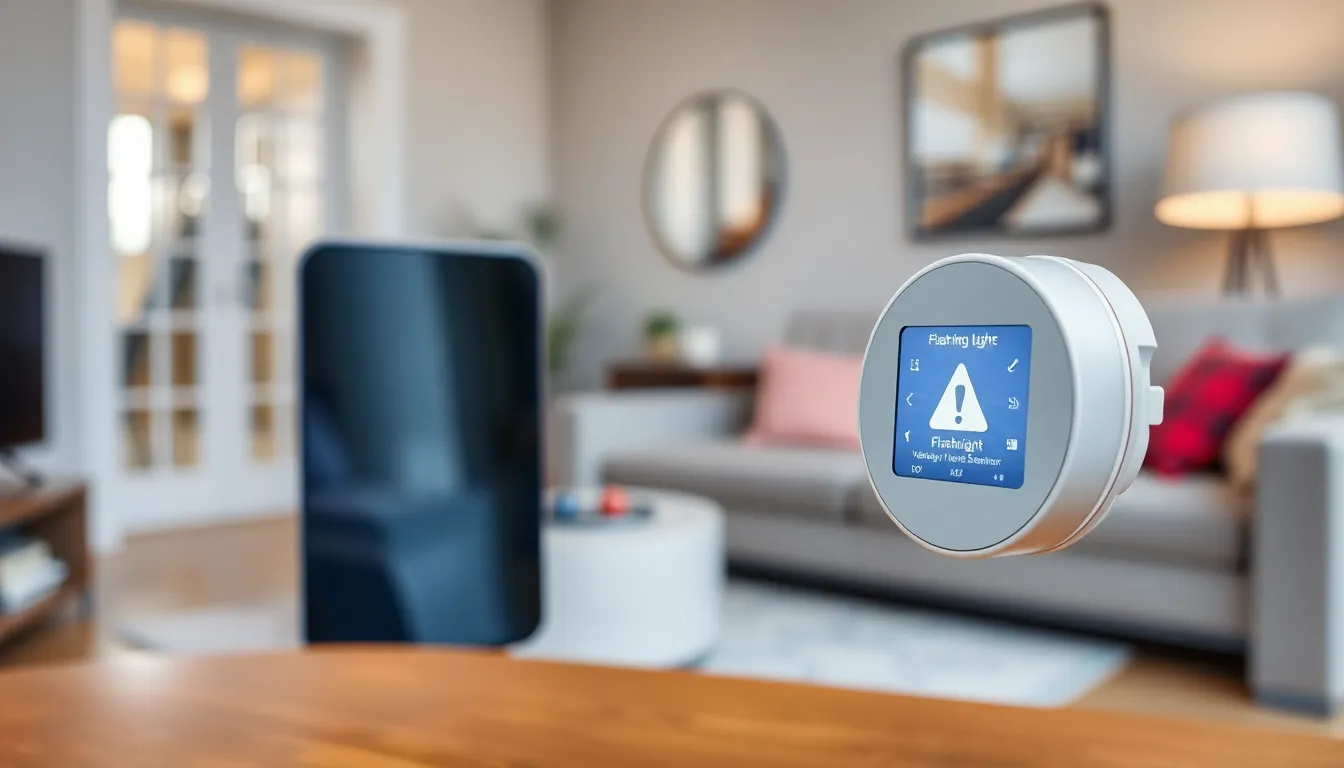Table of Contents
ToggleAs the Internet of Things (IoT) continues to expand, connecting everything from smart homes to industrial systems, the need for robust cybersecurity measures has never been more critical. Each connected device represents a potential entry point for cyber threats, making it essential to safeguard these networks against attacks.
With billions of devices expected to be online in the coming years, vulnerabilities in IoT systems can lead to significant data breaches and privacy violations. Understanding the unique challenges of IoT cybersecurity is vital for individuals and organizations alike. By prioritizing security measures, they can protect their sensitive information and ensure the integrity of their connected environments.
Overview of IoT Cybersecurity
IoT cybersecurity encompasses practices and technologies that safeguard connected devices and networks. These devices, including smart appliances, sensors, and industrial machinery, face unique security challenges. Cybercriminals exploit vulnerabilities in these devices, posing risks to personal data and operational integrity.
A significant concern arises from the sheer volume of connected devices. With projections of over 75 billion devices online by 2025, each device acts as a potential entry point for cyber threats. Attackers can exploit weak passwords, unpatched software vulnerabilities, and inadequate security configurations to launch attacks.
Effective IoT cybersecurity requires implementing multiple layers of protection. These layers include:
- Device Authentication: Ensuring that only authorized devices can connect to the network.
- Data Encryption: Encrypting sensitive data during transmission and storage to prevent unauthorized access.
- Regular Software Updates: Consistently applying patches and updates to fix vulnerabilities.
- Network Security Measures: Utilizing firewalls and intrusion detection systems to monitor and protect network traffic.
Organizations must adopt a proactive approach to IoT security. Conducting risk assessments, investing in cybersecurity training, and developing incident response plans play crucial roles in building a resilient security posture. As IoT continues to evolve, vigilance and adaptation remain essential to mitigate cyber risks effectively.
Common Threats in IoT Security

Organizations face several prevalent threats in the IoT landscape. Understanding these threats is crucial for establishing effective cybersecurity measures.
Malware and Ransomware Attacks
Malware and ransomware pose significant risks to IoT devices. Malicious software infiltrates devices, often through unprotected networks, creating backdoors for cybercriminals. Ransomware specifically encrypts critical data, demanding payment for recovery. Notable instances include the attack on smart cameras that forced companies to halt operations. Regular software updates and strong security protocols effectively reduce exposure to such threats.
Device Vulnerabilities
Device vulnerabilities become clear through outdated software and weak passwords. Many IoT devices lack proper security features, which contributes to their exploitation. For example, compromised smart home devices can allow unauthorized access to home networks. Threat actors can remotely control these devices, causing privacy breaches and data theft. Employing secure configurations and ensuring users change default passwords drastically enhances device security.
Best Practices for Securing IoT Devices
IoT device security involves adopting best practices to prevent unauthorized access and protect sensitive data. The following strategies can significantly enhance the security of connected devices.
Implementing Strong Authentication
Implementing strong authentication methods protects devices from unauthorized access. Organizations should encourage the use of two-factor authentication (2FA), which adds an extra layer of security beyond passwords. Additionally, device owners should change default passwords immediately, replacing them with unique, complex passwords that include a mix of letters, numbers, and symbols. Regularly updating passwords can further reduce the risk of exploitation.
Regular Software Updates
Regular software updates are crucial for maintaining the security of IoT devices. Manufacturers typically release updates to fix vulnerabilities and strengthen device defenses. Users should enable automatic updates whenever possible or schedule regular checks for available updates. Patching known security flaws can prevent potential exploitation by cybercriminals, significantly reducing the risk of breaches and ensuring devices run the latest security protocols.
The Role of Encryption in IoT Security
Encryption serves as a fundamental pillar in IoT security by protecting data during transmission and storage. It converts sensitive information into an unreadable format for unauthorized users, thereby safeguarding privacy. By employing encryption algorithms, data integrity remains intact, ensuring that information exchanged between devices remains secure.
- Data Transmission Security: Encryption secures data traveling over networks, preventing interception by cybercriminals. Protocols like TLS (Transport Layer Security) provide layers of encryption, shielding data from eavesdropping.
- Device Authentication: Encryption aids in verifying device identities, establishing a trust relationship within IoT environments. Secure key exchange methods authenticate devices, confirming their legitimacy before data sharing occurs.
- Storage Protection: Encrypted data stored on devices keeps sensitive information protected even if devices are compromised. It ensures that unauthorized users can’t access readable content, reducing the risk of data breaches.
- Regulatory Compliance: Many industries demand adherence to data protection regulations, such as GDPR or HIPAA. Encryption facilitates compliance by securing personal and sensitive data, reducing legal risks for organizations.
- Scalability and Flexibility: Effective encryption solutions adapt to various IoT scenarios. Whether used in smart homes or industrial applications, encryption mechanisms scale to protect an increasing number of devices without compromising performance.
As the IoT landscape continues to expand, the implementation of robust encryption strategies remains essential. Organizations should prioritize encryption in their IoT security frameworks to mitigate risks and enhance overall security posture.
Future Challenges in IoT Cybersecurity
Emerging trends in IoT cybersecurity pose several future challenges, demanding vigilance from organizations and individuals alike.
- Device Proliferation
Device proliferation continues, with billions of additional devices expected. Each new device increases the attack surface, providing additional avenues for cybercriminals.
- Standardization Issues
Standardization across diverse manufacturers and device types remains problematic. Inconsistent security practices lead to vulnerabilities, making it difficult to implement uniform security protocols.
- Data Privacy Concerns
Data privacy continues to be at the forefront as more devices collect sensitive information. Users face challenges in ensuring their data is protected while navigating various privacy regulations.
- Legacy Systems
Legacy IoT systems often contain outdated software, lacking modern security measures. Organizations must address these vulnerabilities to maintain robust defenses against evolving threats.
- Artificial Intelligence Exploitation
Cybercriminals increasingly exploit AI tools to automate attacks, making defenses more complex. Organizations need to adapt quickly to counter sophisticated tactics enabled by machine learning.
- Supply Chain Risks
Supply chain vulnerabilities present new challenges as interconnected devices rely on numerous third-party components. A security breach in one component can compromise the entire system’s integrity.
- User Awareness and Training
User awareness remains critical yet lacking. Ensuring users understand best practices for securing their devices is vital to reducing risks associated with human error.
- Regulatory Compliance
Regulatory compliance evolves constantly, demanding that organizations stay informed about changes in data protection laws. Compliance failures can lead to severe penalties and reputational damage.
- Resource Limitations
Many IoT devices have limited processing power, which constrains the implementation of advanced security measures. Organizations face the challenge of securing these devices without compromising functionality.
- Incident Response Planning
Organizations must establish effective incident response plans. A lack of preparation can lead to prolonged downtimes and significant financial losses during a breach.
Navigating these challenges requires strategic planning and investment in comprehensive IoT cybersecurity measures, ensuring that devices remain resilient against evolving threats.
As the IoT landscape continues to evolve the significance of robust cybersecurity measures cannot be overstated. The increasing number of connected devices presents both opportunities and challenges that require immediate attention. Organizations and individuals must adopt a proactive stance to secure their environments against potential threats.
Investing in comprehensive security strategies is essential for mitigating risks associated with IoT devices. By prioritizing strong authentication methods regular updates and encryption practices users can significantly enhance their defenses. As cyber threats become more sophisticated staying informed and prepared is the key to maintaining the integrity of connected systems.
Ultimately the future of IoT cybersecurity hinges on collective vigilance and a commitment to continuous improvement in security practices. Embracing these measures will not only protect sensitive information but also foster a safer digital ecosystem for all.







